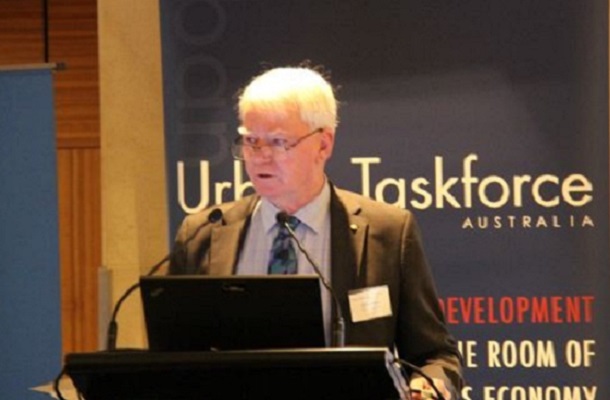3 fundamental policies to improve housing affordability

Currently there are more people looking for new homes than the market is supplying. Chris Johnson, CEO of Urban Taskforce Australia, shares three methods that have worked in the past and can be even more successful in the future.
Three fundamental policies are required to improve housing affordability in New South Wales. The first is to increase housing supply, the second is to encourage the development industry to provide affordable housing by giving incentives and the third is for government to subsidise affordable housing.
In New South Wales and particularly in Sydney we have not been providing the number of new homes required for population growth. The Urban Taskforce believes that in boom times like the present Sydney should be completing over 40,000 new homes a year but the highest we have achieved is 35,000. The mid-range target for Sydney is 726,000 new homes over 20 years but the higher range is 820,000. That means up to 41,000 average a year. Clearly we are well below this so there are more people looking for new homes than the market is supplying.
The development industry is keen to provide more homes but the Sydney planning system is slow and complicated and seems to be predicated on how to stop, rather than support, new housing development. So someone needs to drive a bulldozer through the Sydney planning system. It is easier in Melbourne and Brisbane to get approvals so it can be achieved. A major red tape reduction program is required to help future generations get into new housing.
But the market is booming with prices hot so some sort of intervention in the market place is required to provide rental housing at lower costs than the market. It will not work to simply instruct the market to donate cheaper homes. The market can do this if they get a return elsewhere. This could be by offering bonus floor space for the provision of affordable homes. The best option is through the Affordable Rental housing SEPP 2009 where a developer provides 20% of the project’s area as affordable rental housing for 10 years and then sells the housing. A continual supply will occur that could provide 40,000 extra affordable homes over 10 years according to Urban Taskforce estimates.
The third approach is for the government to subsidise affordable homes on its own land. This means not taking the highest returns for land sales but requiring the private sector to provide say 20% of homes as being affordable and factoring this into a lower sale price.
Governments must demonstrate leadership on helping with housing affordability rather than simply use a stick to force the private sector to do this. If a carrot approach is used then the market will respond positively and real results will occur.
The three methods outlined above have worked in the past and can be even more successful in the future. It is highly unlikely that future governments will simply subsidise housing to make it more affordable. This duplicates the current social housing subsidised approach. The future must be about working with the private sector suppliers of housing to ensure a reasonable component is affordable.
Housing Affordability Online Consultation:
Q: What can be done to improve housing affordability?
Chris Johnson is the CEO of Urban Taskforce Australia, an organisation that represents the property industry. In this role Chris has produced research papers on the structure of local government in NSW and publications on the future of our cities. He worked closely with local government as Executive Director in the NSW Department of Planning in developing the Housing Code, plans for regional cities and urban renewal generally. Before this he was NSW Government Architect for 10 years, a member of the Central Sydney Planning Committee, the Heritage Council of NSW and many government committees. Chris has written or edited over a dozen books on urban planning, architecture and cities. He has been adjunct professor at 3 Sydney universities and was made a Member of the Order of Australia in 2012.













